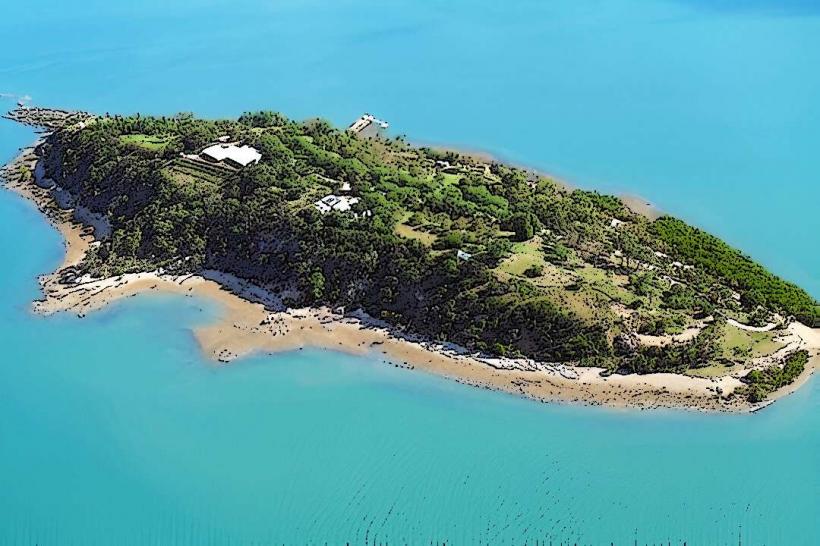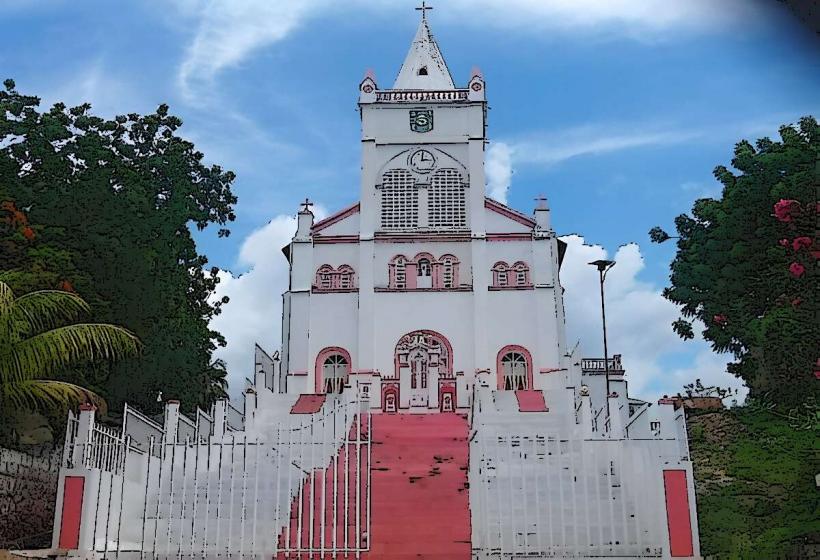Information
Landmark: Anse-à-Veau BayCity: Les Iles Cayemites
Country: Haiti
Continent: North America
Anse-à-Veau Bay is a picturesque coastal area located in the Nippes Department of southern Haiti. Known for its stunning natural beauty, tranquil waters, and cultural significance, the bay is an integral part of the town of Anse-à-Veau, which is rich in history and local traditions.
1. Geography and Location
- Anse-à-Veau Bay lies along the southern coast of Haiti, facing the Caribbean Sea.
- The bay is part of the larger Gulf of Gonâve, which encompasses numerous other notable coastal areas.
- It is bordered by rugged cliffs, lush vegetation, and small fishing villages, offering a blend of natural beauty and rural charm.
2. Natural Features
- Clear Waters: The bay boasts calm, turquoise waters, making it ideal for swimming, fishing, and other recreational activities.
- Beaches: The coastline around the bay features sandy beaches and rocky shores, offering stunning views and a peaceful environment.
- Marine Life: The waters are home to a variety of fish and other marine species, supporting local fishing communities.
- Surrounding Landscape: Hills and cliffs provide a dramatic backdrop to the bay, with lush greenery and small settlements dotting the area.
3. Historical and Cultural Significance
- The town of Anse-à-Veau has a rich history tied to Haiti’s colonial and revolutionary past.
- During the Haitian Revolution, the region was a site of strategic importance, and its coastal location facilitated communication and trade.
- The bay and its surroundings are central to the daily lives of the local population, particularly through fishing, agriculture, and small-scale trade.
- Local traditions, including festivals and religious ceremonies, often incorporate the bay as a focal point for communal gatherings.
4. Economy and Livelihoods
- Fishing: The bay is a vital resource for local fishermen, providing a livelihood for many families.
- Agriculture: The fertile lands near the bay support small-scale farming of crops like bananas, yams, and cassava.
- Artisanal Crafts: The town and surrounding areas produce handicrafts, including woven goods and pottery, sold to locals and visitors.
5. Tourism Potential
Anse-à-Veau Bay is a hidden gem for travelers seeking an authentic and serene Haitian experience. It offers:
- Eco-Tourism: Opportunities to explore the natural beauty of the bay, including hiking, birdwatching, and snorkeling.
- Cultural Tourism: The nearby town of Anse-à-Veau allows visitors to immerse themselves in local traditions and interact with the community.
- Relaxation: The tranquil environment is perfect for those looking to escape the bustle of urban life.
Challenges for Tourism:
- Limited infrastructure, including roads, accommodations, and services.
- A need for sustainable tourism development to preserve the natural and cultural environment.
6. Accessibility
- The bay is accessible via road, though some routes may be challenging due to limited maintenance.
- Visitors traveling from Port-au-Prince or other major cities can reach Anse-à-Veau by car or public transportation, but travel times may vary depending on road conditions.
7. Environmental Considerations
- Conservation: The bay’s natural beauty and marine ecosystem are at risk from overfishing, pollution, and deforestation in surrounding areas.
- Community Efforts: Local initiatives to protect the environment and promote sustainable practices could help preserve the bay for future generations.
8. Nearby Attractions
Visitors to Anse-à-Veau Bay can also explore:
- Les Cayes: A larger coastal city offering more amenities and attractions.
- Miragoâne Bay: Another stunning coastal area in the Nippes Department.
- Macaya National Park: A protected area with rich biodiversity, located further west.
9. Conclusion
Anse-à-Veau Bay is a beautiful and culturally significant coastal area in Haiti, offering a mix of natural splendor and local charm. While its potential as a tourist destination remains largely untapped, the bay is an excellent example of Haiti’s diverse landscapes and vibrant traditions. Efforts to improve infrastructure and promote eco-tourism could unlock new opportunities for both visitors and the local community.



